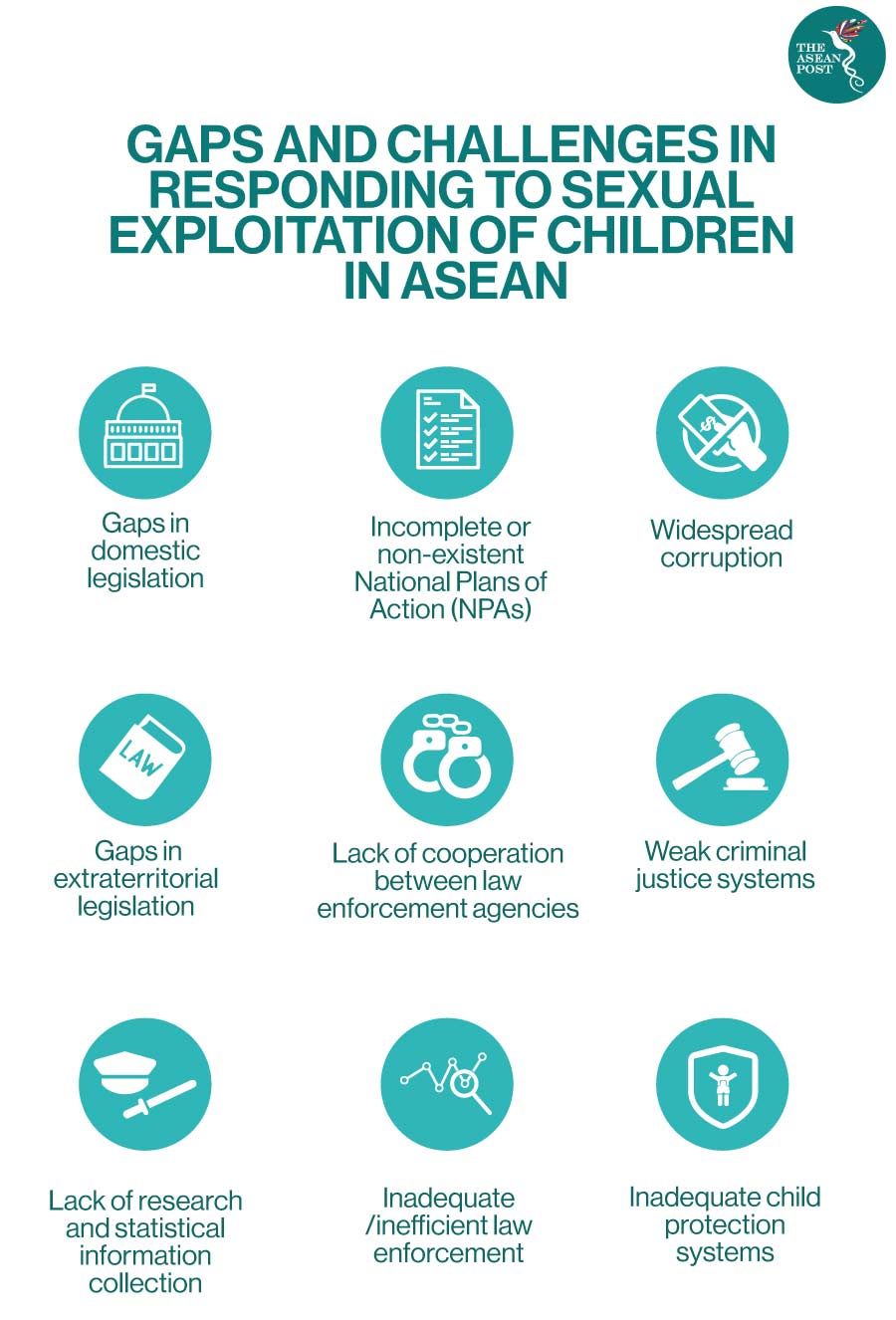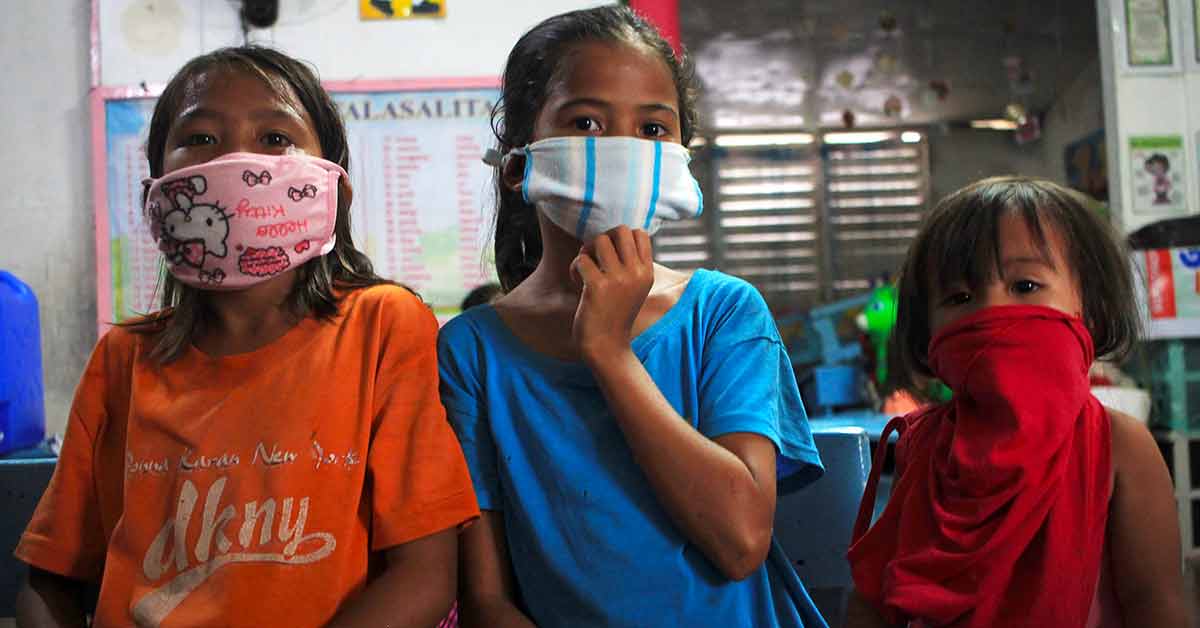The Convention on the Rights of the Child (CRC), defines violence against children (VAC) as “all forms of physical or mental violence, injury and abuse, neglect or negligent treatment, maltreatment or exploitation, including sexual abuse.” Article 1 of the CRC defines a “child” as every human being below the age of 18 years.
Today, VAC is not just limited to conventional spaces (e.g., home, school, community). There are new forms of VAC taking place online or in cyberspace. The online sexual exploitation of children (OSEC) is VAC online that is a global issue with an ever-increasing scope due to the rise in technology and internet connectivity around the world.
It is also one of the fastest-growing abuses against children irrespective of sex, gender, and economic status. It is becoming a grave concern in the Philippines amid the coronavirus pandemic.
To note, OSEC is the production, for online publication, of visual depictions (e.g. photos, videos, live streaming) of the sexual abuse or exploitation of a minor for a third party who is not in the physical presence of the victim, in exchange for compensation.
Setting & Context
Since the start of the coronavirus outbreak in the Philippines, there has been an upsetting increase in OSEC cases. The Philippines, thus far, has been identified as a “global hotspot” for OSEC. According to global law enforcement data, the Philippines is the largest known source of OSEC cases.
Based on reports, the number of OSEC cases has increased three-fold over the last three years.
The Department of Justice-Office of Cybercrime (DOJ-OOC) reported that there has been a 264.63 percent increase in the number of reported OSEC cases between 1 March and 24 May, 2020 compared to the same period last year.
One of the plausible explanations for a surge in OSEC cases amid the coronavirus pandemic, is because children nowadays spend more time online, and this situation makes them vulnerable and easy prey to sexual predators who target children. Thus, in this time of the pandemic, OSEC is indeed becoming all the more a serious and a growing problem in the Philippines.
This disturbing online-based violence against children, sadly, is not a new phenomenon in the Philippines, rather, it has been pervasive even before the advent of the COVID-19 pandemic. ChildFund International notes that between 2014 and 2016, the DOJ received around 66,000 reports of OSEC cases from the National Center for Missing and Exploited Children (NCMEC).
From 2011 to 2018, 99 victims of OSEC were recorded, 54 of them were 12 years old and below, 32 were minors above 12 years old, and 13 were adults. However, there are OSEC victims who are as young as seven years old, and some as young as a two-month-old baby. In most cases, 93 percent of OSEC victims are female and the rest are male.
UNICEF (2016) also identifies the Philippines as one of the top 10 countries producing child pornographic materials globally. Likewise, it also purports that cybercrime dens have been reportedly operating in many parts of the country since 2012. ChildFund International (2018) on the other hand says that the Philippines is among the top 10 countries where child online exploitation takes place among mostly boys and girls aged between 10 and 14 years.
Perpetrators And Traffickers
The primary traffickers who lure children into OSEC are parents or other immediate family members (i.e., siblings, aunt/uncle), peers, and adults (pimps), who usually live in the same community, and who pimp children to online paedophiles as a “quick and easy” way to make money. They justify their actions on the basis that they need to survive and based on the distorted perception that there is no physical contact or actual consummation taking place anyway, then it’s fine.
Approximately 73 percent of OSEC cases result in the arrest of a family member or close family friend. The International Justice Mission (IJM) reported that the majority of OSEC cases (87 percent) involved at least one female trafficker, usually a mother or other female relative.
However, in some cases (54 percent), OSEC involves more than one trafficker with each playing distinct roles – one may communicate with the customer while the other oversees or commits the sexual abuse or collects the money for the abuse.
Likewise, the IJM report also purported that 41 percent of abuse cases were facilitated by biological parents, and 42 percent by other relatives, or at least 83 percent by people related to the child victims. Likely so, it seems that OSEC, more often than not, is usually a family-based crime.
The perpetrators (“customers”) of OSEC are usually older men and in most cases from Western countries. Many of these perpetrators have travelled to or lived in the Philippines at some point in time.
For the most part, financial motivation is the primordial reason for most facilitators of OSEC.
In most cases, children are deceived and convinced into thinking that what they are doing is good and helpful to the family’s survival. They are often asked to do sex-oriented shows online in varying degrees, depending on the customer’s demands.
The more exposure of body parts or the more difficult sexual acts command a higher price. Generally, online sex predators pay US$19 to US$95, or even up to US$190, for each sexual act on livestream.
Without proper intervention or the arrest of traffickers, OSEC abuses usually last for years.
Impacts Of OSEC On Child Victims
The physical, psychological, and emotional harm to children resulting from OSEC is devastating. OSEC creates lasting emotional and psychological trauma, as well as physical pain and suffering. The damage of OSEC to child victims lasts a lifetime.

Guilty feeling and self-blame are also effects of OSEC especially for victims who are doing it on their own because of perceived financial benefits. Low self-esteem and confidence, a feeling of inadequacy, stigmatisation, depression, shame, self-destructive behaviours, and sometimes suicidal tendencies, are but among the emotional and psychological impacts of OSEC to its victims.
Likewise, OSEC victims become traffickers and perpetrators themselves as a result of their experience, luring them into the world of crime.
Drivers Of OSEC
With the advent of rapid expansion and advancement of Information Communication Technologies (ICTs), children have become more exposed to various ICT platforms, making them even more vulnerable to online sexual exploitation. ICT devices such as smartphones, laptops, and tablets make online-negotiated and facilitated operations very much accessible and affordable for pimps or sex predators.
In most cases, sex predators use social media sites, dating sites, and classified advertisement sites to transact OSEC. OSEC offenders normally use internet communications such as instant messages, e-mail, and chatrooms to meet and develop intimate relationships with their victims.
In most cases, those who are likely to be child victims of OSEC are children who are not protected from inappropriate materials circulating on the internet, which makes them more at risk and vulnerable to online sexual solicitation and priming.
Moreover, child victims of OSEC in most cases come from poor dysfunctional families, broken homes, have absentee parents, are children of overseas foreign workers (OFWs), have parents with poor parenting practice, and parents who are engaged in criminal activities and vice like substance abuse and addiction. Child victims who come from these types of parents or families usually lack guidance, support, and nurturing from their parents, families, and communities.
Although poverty is still the compelling push factor in the decision to engage in online commercial sex, other emerging factors lure children or their families into the trade. These include consumerism, materialism, media influences, and peer pressure.
What Has Been Done?
Law enforcement agencies have started investigating those involved in this appalling trade. On 11 March, 2020 the DOJ-OCC met with internet service providers (ISPs) to remind them of their responsibility when it comes to installing available technology, programs, or software to ensure that access or transmission of any form of child pornography is blocked or filtered under the “Anti-Child Pornography Act of 2009.”
According to the DOJ-OOC, 11 years have passed after the passage of the said law, but still, ISP companies continue to neglect their duties. To note, protecting Filipino children and blocking child pornography is part of the requirements for ISP companies to retain their franchises.
Moreover, from 2011 till the end of 2019, the IJM and the Philippine government responded to 171 cases of OSEC, resulting in 571 victims being rescued, 229 suspects charged, and 76 convictions.
However, much remains to be done to curb OSEC – a social menace to children’s rights and welfare.
Conclusion
The worrying and alarming incidence of VAC online, more particularly OSEC, is indeed spreading and increasing faster than expected along the course of the coronavirus outbreak in the Philippines. OSEC is more magnified in this time of the pandemic, since most people, children for that matter, spend more time on the internet.
Thus, surveillance and monitoring of internet operations most particularly those involved in OSEC will have to be heightened, including the prosecution of ISP providers who are found to have been hosting such activities. Also, it is imperative to regulate children’s use of the internet through close parental/family supervision.
However, efforts in curbing OSEC should not just be limited to mere law enforcement and prosecution. Filipinos as a community, and as individuals, especially, parents, family relatives, and families for that matter, need to look deep and reflect more on how child-rearing is being practiced to understand why children become and remain vulnerable to exploitation by online sex offenders.
The family may be the smallest entity in society, but its importance as the basic unit of society should not be underrated. Though not the only institution, it is thus far the primary unit that is responsible for ensuring the welfare and well-being of children.
Therefore, it needs to be preserved and given all the necessary support and assistance for it to be able to fulfil its basic function of nurturing children until the time they are old enough to stand on their own and care for themselves.
Furthermore, there’s also a need to correct the notion and social expectation that children are somewhat the property of their parents or elders, to be disciplined, exploited, and victimised by adults. Likewise, the community at large must not be silent and must not turn a blind eye on issues related to OSEC or any violations and atrocities against children for that matter.
On the part of the Philippine government, there’s a need to strengthen the implementation of existing laws providing for children’s protection. Laws that promote the protection of children from atrocities need to be enacted – such as laws to increase the minimum age of sexual consent and statutory rape – to weaken legal impunity for sexual violence against both, boys and girls.
There’s also a need for strict and meaningful implementation of the Anti-Child Pornography Act of 2009 to eliminate exposure of children to harmful materials and to prevent their victimisation.
Related Articles:

